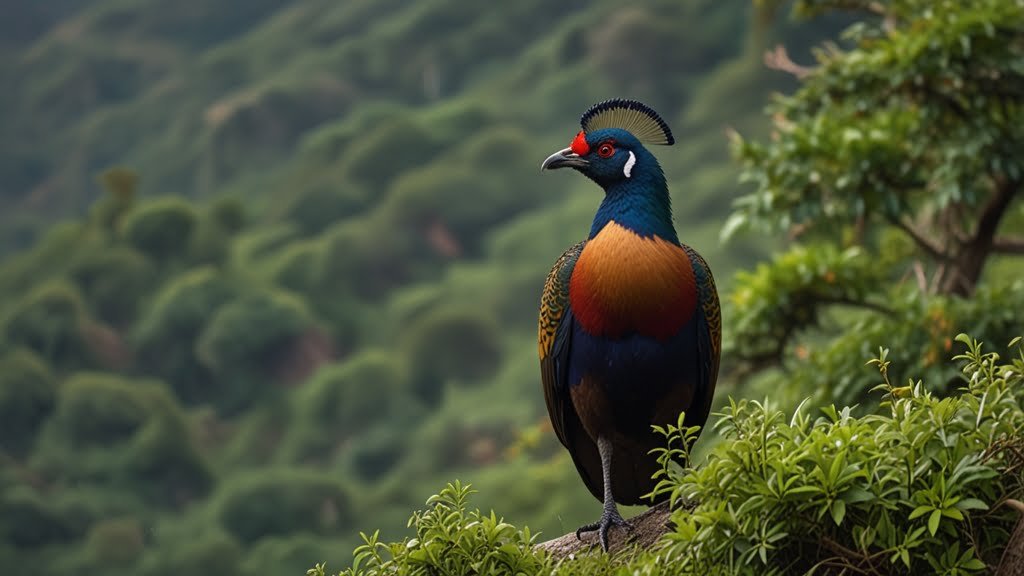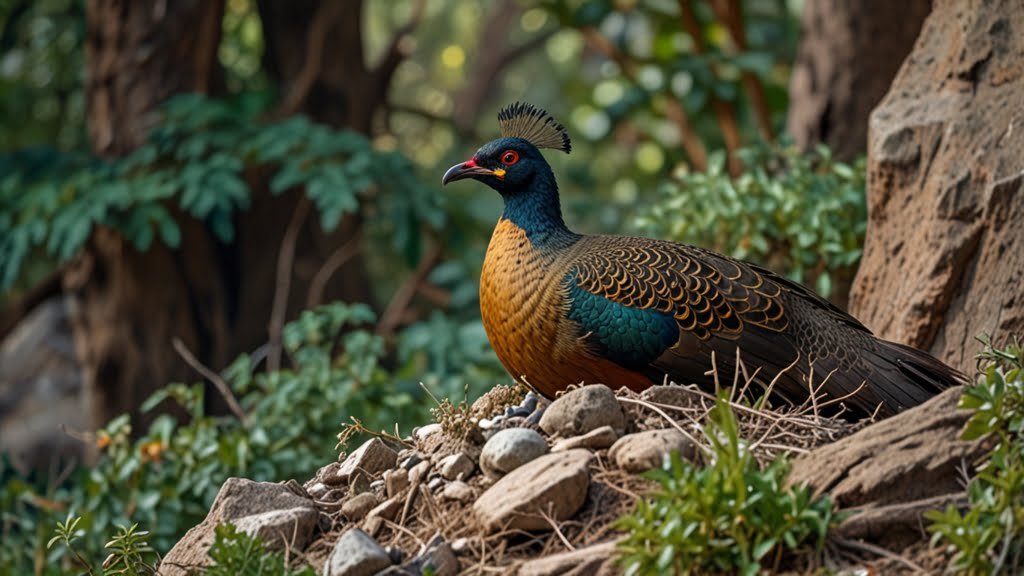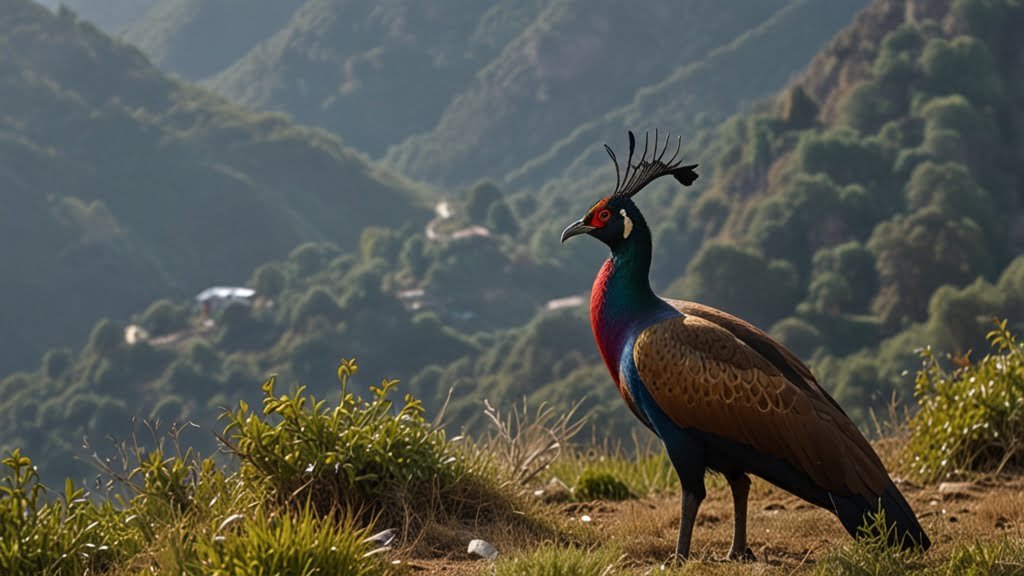Introduction
Nestled among the snow-capped peaks of the Himalayas, the Himalayan Monal (Lophophorus impejanus) stands as a testament to nature’s vibrant artistry. With its dazzling plumage and elusive nature, this pheasant is not just a bird; it’s a living masterpiece. As we traverse the rugged terrains where the Himalayan Monal roams, we uncover seven fascinating facets of its life, from its striking appearance to the challenges it faces in a changing world.

1. The Resplendent Plumage of the Himalayan Monal
Imagine a bird cloaked in the hues of a sunset sky—this is the essence of the Himalayan Monal. The male’s feathers are a kaleidoscope of iridescent colors: fiery reds, emerald greens, and sapphire blues. Each plume seems to shift and shimmer with every movement, an optical illusion of nature’s own making. The crest atop its head adds a touch of royal flair, completing its resplendent ensemble.
2. Habitat: The Monal’s Majestic Domain
The Himalayan Monal thrives in the high-altitude expanses of the Himalayas, a realm of dramatic contrasts. From the lush forests of Bhutan to the alpine meadows of Nepal, this bird prefers elevations between 2,000 and 4,500 meters. Its habitat is a mosaic of dense undergrowth and open clearings, where it forages and finds refuge. But this idyllic landscape is increasingly fragmented by human activity and climate change.
3. Diet: The Monal’s Gastronomic Preferences
A true omnivore, the Himalayan Monal exhibits an eclectic palate. Its diet ranges from seeds and fruits to insects and small invertebrates. This varied diet is essential for its survival, particularly during harsh winters when resources are scarce. By feasting on a mix of plant and animal matter, it plays a subtle yet vital role in maintaining the ecological balance of its mountainous home.
4. Breeding Rituals: A Dance of Courtship
When it comes to courtship, the Himalayan Monal performs a spectacular dance. Males engage in intricate displays, puffing out their vibrant feathers and executing a series of elaborate movements to woo potential mates. These courtship rituals are as much a display of beauty as they are of strength and vitality, crucial for securing a breeding partner and ensuring the continuation of their lineage.

5. Reproduction: Nurturing the Next Generation
Nesting is a delicate affair for the Himalayan Monal. Females lay their eggs in well-concealed nests, often hidden among rocks or dense vegetation. The incubation period spans about 28 days, during which both parents share the responsibility of keeping the eggs warm and safe. Once hatched, the chicks are nurtured with great care, feeding on a diet of insects and plant material provided by their parents.
6. Conservation Status: A Call for Action
Despite its captivating allure, the Himalayan Monal faces several threats. Habitat loss due to deforestation and encroachment, coupled with the impacts of climate change, jeopardizes its future. While currently listed as “Least Concern” by the IUCN, the delicate balance of its habitat means that continued vigilance and conservation efforts are essential to ensure its survival.
7. Why the Himalayan Monal Matters
Beyond its aesthetic appeal, the Himalayan Monal is a keystone species in its ecosystem. By influencing the structure of vegetation through its foraging habits and serving as prey for higher predators, it maintains the intricate balance of its mountainous home. Protecting this bird is not just about preserving beauty; it’s about safeguarding a vital component of an entire ecosystem.

Conclusion
The Himalayan Monal is more than just a spectacular bird; it’s a symbol of the wild, untamed beauty of the Himalayas. From its mesmerizing plumage to its crucial ecological role, it embodies the essence of high-altitude splendor. As we face environmental challenges, preserving the habitat and ensuring the survival of the Himalayan Monal becomes imperative. By cherishing and protecting this magnificent creature, we honor the grandeur of the natural world.



